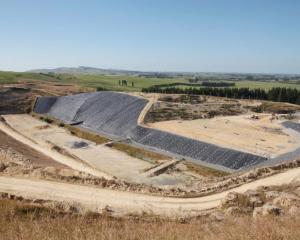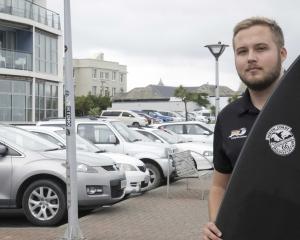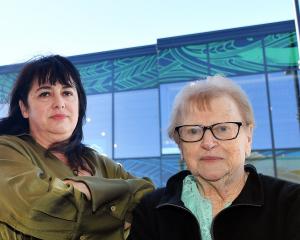Large parts of the Fairfield suburb, in Dunedin, could be at risk of localised subsidence as a result of deteriorating coal mines hidden beneath residents’ feet, the Dunedin City Council has been warned.
The blunt assessment came from geotechnical engineering consultant GeoSolve, which was called in by the DCC following the discovery of three small holes in the William Martin Recreation Reserve in October.
The Fairfield reserve was closed to the public on November 1, about two weeks after holes started appearing above what was known to be the location of an abandoned underground coal mine.
The GeoSolve report, by engineering geologist Patrick Lepine, noted three ‘‘sinkholes’’ had been found in the reserve, the largest measuring 40cm wide and 1.2m deep.
However, the area between the sinkholes was also showing ‘‘initial’’ signs of subsidence, and ‘‘there is a possibility that the area of the sinkholes is larger than visually apparent and further instability may occur’’, it warned.

The affected area appeared to be isolated to a 5m by 5m piece of the reserve, but a lack of information about the site meant ‘‘there could also be other areas where similarly unstable ground may be present’’.
The sinkholes could be the result of a combination of subterranean erosion caused by groundwater, coupled with historic open-cast mining in the area, the report said.
But the possibility they were the first signs of collapses within old abandoned underground coal mines in the
area could not be ruled out, it said.
The reserve and surrounding area was once the site of the Walton Park coal mine, which operated from the 1870s and left behind a network of interconnected but deteriorating tunnels when it closed in the early 1900s.
The GeoSolve report noted mining techniques from the period also left behind voids within coal seams, which could eventually collapse, causing localised subsidence and ‘‘crown holes’’ at the surface.
Similar problems had been documented elsewhere in Fairfield over the years, and collapses could occur ‘‘very suddenly’’, it said.
‘‘Consequently, there is some risk to the public, however, this risk is also generally applicable to localised areas over a large part of Fairfield,’’ the report said.
The reserve was also known to be adjacent to an abandoned mine tunnel entrance, called an ‘‘adit’’, which ran at shallow depth from the surface.
The entrance had been sealed using explosives in the 1950s, but that was not done ‘‘with long-term stability in mind’’, the report said.
The exact location of the adit was now also ‘‘uncertain’’, and it was not known if the new sinkholes appearing in the reserve related to the adit, the report said.
An earlier report by GNS, undertaken in the 1990s, had pointed to the collapse of sections of the adit roof underground, in 1960 and 1975, causing ground subsidence at the surface.
GeoSolve recommended undertaking further investigations of the cause, as well as the risk to the general area.
It also noted the work could be ‘‘complex and costly’’.
The council could opt for remedial work — such as bulk filling the sinkholes and monitoring the area — in that area, but would need to ‘‘accept the risk of further failures in the wider area’’, the report said.
DCC parks and recreation group manager Robert West said the council had opted to proceed with the second option and would be undertaking remedial work on the new sinkholes.
‘‘This entails filling in and regularly monitoring future changes on the site. At this stage, we don’t know the cost of the work or the timing,’’ he said.
He said the sinkholes did not appear to be getting worse and the council was ‘‘comfortable’’ remedial work and monitoring would be sufficient.
The detail of the work to be carried out was yet to be
determined, but council 3 Waters staff would review the report, he said.
Advertisement













